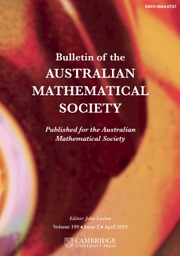Crossref Citations
This article has been cited by the following publications. This list is generated based on data provided by Crossref.
Saha, Bhola Nath
and
Sanki, Bidyut
2025.
Filling with separating curves.
Journal of Topology and Analysis,
Vol. 17,
Issue. 06,
p.
1841.



